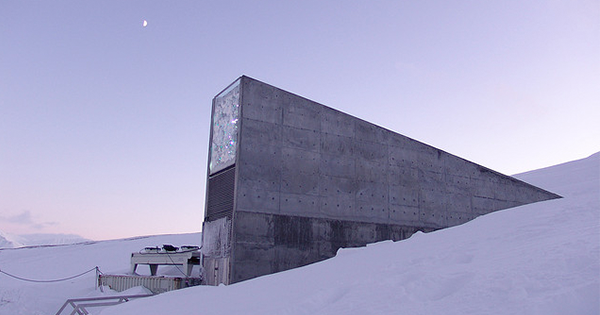
In 2008, some 860,000 seeds from nearly every one of the world’s countries were deposited in an underground vault carved into an Arctic mountainside. The Global Seed Vault, in remote Svalbard, 1,300 kilometers from the North Pole, was designed to protect the world’s crops from the worst natural disasters, nuclear war, and pandemic diseases. Even if the electricity supply to the storage system were to be cut, the vault would remain frozen and the seeds protected for another 200 years.
Why the elaborate precautions? This vault contains something far more precious than everything inside Fort Knox: our food.
As global diets start to look the same, we increasingly rely on few crop varieties, causing previous staples to become forgotten. Nowadays, wheat is popular across the globe, whereas millets have fallen out of favour. Already, the world has lost some 75 percent of crop varieties in the past century, according to the UN Food and Agriculture Organization, with a third of today’s diversity expected to be lost by 2050. The seed vault is there for when pests, disease, climate change or other disasters affect harvests.
Last month, the system was tested. Syria applied to withdraw seeds, including drought-tolerant varieties of wheat, barley, and grasses, to replace those lost during its ongoing war, which has killed around 250,000 people and displaced more than 11 million. The seeds will be sent.
As we move further into the Anthropocene, the new Age of Humans, we are leaving behind a world with a small human population, stable climate and plentiful resources. We are already more than seven billion-strong and heading toward 10 or 11 billion. Our climate is becoming more violent and unreliable, and we are running out of many resources. If we are to live in comfort and security as a global society, we need to bolster our defenses, and that means safeguarding the most valuable parts of the Holocene world.
The difficulty is in deciding what is most valuable and how to preserve it. The rich variety of wildlife on our planet is under assault—we are perhaps heading into a mass extinction event that will eliminate some 75 percent of earth’s species. Like the seed bank, various initiatives are attempting to bank the genetic codes of some of these endangered species, perhaps for de-extinction when their habitable conditions can be restored.
What about today’s plentiful freshwater? Much of it is now locked up in glaciers, but as they melt, we are running out of free storage. With rivers being extracted faster than they are replenished, and lakes and aquifers drying up, we urgently need to bank our freshwater, too. Like the seed vault, underground storage would be best, to prevent evaporation. But building underground reservoirs is very costly and is certainly not being done on the scale required.
What about the other things we are in danger of losing, such as rare metals and minerals? Rather than throwing away metals in disposable products, we need to keep them circulating through reuse and recycling.
In truth, we cannot bank everything that is precious about our extraordinary world at this time in its life—nor, perhaps would we want to. The planet’s biology, chemistry and physics have always been in flux, even if we are currently witnessing a major upheaval—and even if it is because of us. There is beauty and usefulness in the changes that we humans are bringing. But there is also reason to be cautious and prepared. The Holocene has been good to us, with favourable conditions that enabled our incredible civilizations to flourish. The Anthropocene is an unknown quantity. But, as the Syrians are discovering to their relief, our capacity for foresight and wisdom to act may well prove our salvation in the challenging decades to come.

